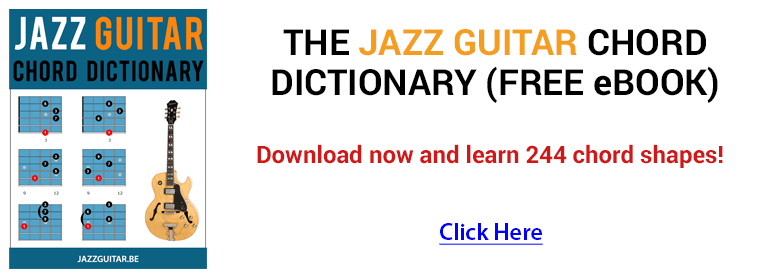-
I bought an Ibanez Mikro (22.2") for my daughter 12 years ago, but she never used it much. So I use it now. Plays nice, and I use it for laying down parts in the computer. I tune it to standard pitch.
I needed to dress the frets and I added a capacitor to the volume pot. The rest is stock.
-
12-26-2021 12:01 PM
-
I like the idea as I am a huge Gibson ES-140 and ES-125 3/4 fan. I initially imagined a more custom es-140 style guitar… now after some of the comments and specs, the guitar appears to me to be more electric/solid body hollow style… aka PRS hollow body etc. is this correct?
For me, a price over $3k has me bailing (at least based on my imaginary image of the guitar, which could be totally incorrect). Also, 0.825 at the 1st fret is rather thin, which changed my “imaginary image” of the guitar from an little hollow body jazz guitar to more electric based.
-
Just imagine this with no treble side sound hole and scaled down a bit from a 15" lower bout to a 14" lower bout. (And the .825 is definitely NOT carved in stone. I would prefer something bigger like an .860 to a .960)
 Originally Posted by Steve Z
Originally Posted by Steve Z
-
I've always assumed that there were tuning and intonation problems which are worse as the scale gets shorter. But that's been an unexamined assumption.
I have a Little Martin with a 23" scale. My son recorded an album of pop music with it. Everything from fingerpicking to power chords and it sounded great. The set up is not conducive to an old guy playing jazz though. Action is a little too high and stiff. Bridge isn't adjustable. So, I'm reluctant to to try to lower the action (sanding the bottom of the bridge insert?) out of concern that it will throw the intonation off and I won't be able to undo it.
-
I agree that a guitar has inherent intonation issues and the shorter the scale length, the more obvious those issues become but like most things in a guitar, it's always a compromise. In this case it's a compromise between playability and intonation. Hopefully we choose the one that we are best able to overcome. If I choose the shorter scale length for the sake of improved playability then I can compensate but using a lighter touch and a softer attack. For me, that is easier than struggling with higher tension levels coupled with longer stretches. It wasn't always that way but as I get older some of the decisions are forced upon me.
 Originally Posted by rpjazzguitar
Originally Posted by rpjazzguitar
-
Very good point. The demand for ukes has increased a lot lately (at least here in Europe). A lot of young people started playing the uke. However, most of them won't probably spend more than 100-200 euros on an instrument.
 Originally Posted by medblues
Originally Posted by medblues
-
Ibanezish neck (Artcore). With a bolt on neck one could have a kit with one body and more necks of e.g. different scales.
-
That's absolutely true but there is a truth that I learned in my years in the boutique guitar business: the customer base is a tiny percentage of the total market. The competition is for the people already among that tiny percentage. Just like guitars, there are high end ukes. Most may cost $200 or less but there are some selling for thousands as well. When you're only trying to sell 40 or 50 guitars a year, you micro target that tiny minority and don't concern yourself with the larger market place.
 Originally Posted by Joeontheguitar
Originally Posted by Joeontheguitar
-
Jim, it is great news that you are considering a re-entry into the guitar making pond.
Regarding your question regarding interest into a 24” scale electric solid body; I would be a “no”. I have a bit of difficulty in the tight fret spacing in the upper registers with my 24-7/8” scale guitars with my fingers. I actually find my 25”, 25-1/4”, 25-3/8” and 25-1/2” scales easier to finger for this reason. I also play a lot acoustically and my fretting pressure tends to be still on the heavy side and intonation would likely be impacted.
I know that my friend and fingerstyle acoustic guitar master Larry Pattis was playing some 24” scale steel string acoustics for some years made by Florida luthier Simon Fay and a nylon string by luthier Anders Sterner due to some physical limitations. I think that he has since moved back up to standard scale length instruments. Santa Cruz has made the Firefly acoustic for years with some popularity as well. There are some carbon fiber travel guitars as well with 24” scale lengths. So there is a small market.
It sounds like a solution to your playing challenges, but I suspect it has a limited market. Players typically solve the tension issue by string gage in the electric world. The move from 11s to 10s in tension is greater than the move from 25” to a 24” scale length. Either way, I wish you the best with your endeavor.
-
Similar to the poster above, I find the Gibson scale already quite uncomfortable around 12th fret and would rather err longer. If I had smaller and "more precise" hands, into open chords and alt tunings and stayed away from the "dusty area" then shorter scale would be a cool tonal and functional option.
-
My favorite guitar of late is a Taylor GT. It’s 24 1/8 scale and 1 23/32 width is perfect for me.
-
I've picked up my grandson's Duo Sonic w/24" scale from time to time - like you, it triggered thoughts of a 24" scale in a high quality guitar with proper neck specs, light weight, and other suitable design specs, with a small size archtop or maybe a Tele-style body.
I find that smaller sized/lighter guitars and scale lengths are ergonomically much easier on an aging body and my guitar rack is slowly morphing in this direction. I recently bought a Peerless Martin Taylor Virtuoso because it's a very playable smaller sized archtop with a 24.6 scale length. I factory ordered a Tom Anderson - a Tele style guitar with a Gibson scale, mahogany body and neck (chambered Cobra T). The neck can be specified to your satisfaction.
I would be all over the right 24" scale length guitar, either small archtop, Tele style, or maybe Chris Forshage would cook up a chambered Ergo with a 24" scale length?
-
Back in '66 the Goya Rangemaster 101 and 103R 'sim jim' archtops had a 24 & 1/2" scale, as did many of the other Italian-made laminated archtops, Eko, Vox, Giulietti, etc. No shortage of takers back then, apparently. The USA 1966 retail price on the Goyas was actually $25 more than the Guild T-100 !
Today however I fear short-scale instruments (Byrdlands excepted) are seen by many as merely 'toy' guitars, however well-built and usable they are, such as the Burns short-scale solid electrics.... Personally I'm happy with 24 & 1/2" scale, but wouldn't wish for anythng shorter. For my hands, the Godin stable brands have it spot-on with their typical 24.85" lengths - ideal for beginners and pros alike - and for me !
-
Since this thread is still going, I thought I'd just mention that my Mustang is getting a Fralin hum-cancelling P90 soap bar pickup installed this week.
-
Re your specs:Standard spacing would be 1 11/16 at the nut with a 1 3/4 option and a 2" thick contoured mostly hollow body with a 14" lower bout. That comes very close to describing a Gibson ES 446 CS, which is fully hollow but only 1 5/8 thick. I've owned one for some years, and play it often, largely due to its compact size and neck scale. It needs some attention sound-wise, stock pups are PAFs, but the guitar struggles to produce rich/mellow sounds. I'm going to try a Lollar Charlie Christian in the neck position.
 Originally Posted by Jim Soloway
Originally Posted by Jim Soloway
In my view, your specs would be ideal, I would be happy with a neck scale between 24 and 24.6. You've owned a Forshage Ergo, as have I. Mine was ordered with a Gibson scale, and was a lovely guitar. I made some other design choices that I came to regret, so I sold it, anticipating ordering another one (now called Orion). One issue with that guitar for older players is the tuning difficulty - the small knurled tuning keys were very difficult to turn for my old fingers. I did develop a simple solution for that, but had not yet implemented it. But, I'm thinking that Chris Forshage would be a person to approach to build a quality guitar to spec with a shorter scale neck at a reasonable price, headless ergo or standard style.
-
I build a 23.25" scale semi-hollow, '59 neck carve with 1.75" nut width.
CR GUITARS - Radack, master of designLast edited by RadackGuitar; 02-19-2024 at 10:55 PM.
-
I'm on your site right now. Lots to love in these designs. The scale length, the neck profile (my favorite BTW), the custom tail piece, the weight, the pickup choices, I even like the acoustic style peghead. I don't have any sort of real budget these days so it's probably not going to be for me but I'd love to put my hands on one some days.
 Originally Posted by RadackGuitar
Originally Posted by RadackGuitar
And for anyone interested in seeing more, here's a direct link to Rob's site. It's well worth a visit.
Custom short scale guitars
-
Thanks for the kind words Jim, it means a lot, I’m quite familiar with and a fan of your work.
I’ve always been a fan of short scale instruments and interested in smaller formats. Like many of the posters here I agree that builders/companies blow it with the neck specs. A short scale guitar shouldn’t be proportionality smaller, actually many specs should be larger. The way i designed and describe the feel of my guitars is… imagine your favorite vintage full scale length guitar with a capo on the second fret, that’s a feel players are familiar with. I found even 1 11/16” was too narrow for the nut, the first few I built had 1 7/8 nut widths, felt great. I went with the 23.25 scale because I found it was the shortest you could use and still have standard tuning with no intonation issues. I wouldn’t go lighter than 11’s but personally feel that 12’s on these is the bee’s knees.
 Originally Posted by Jim Soloway
Originally Posted by Jim Soloway
-
I wish I could find a lefty Byrdland scale instrument. The problem with many guitars like the ibanez micro, is the nut width is too small. And, I think it actually does a disservice to younger players as well.
-
I agree (and I'm pretty sure, based on what he's written that Rob Radack agrees as well). I have a custom neck on my Mustang with a 1 3/4" nut width and I would have gone to 1 13/16 if I could have.
 Originally Posted by vintagelove
Originally Posted by vintagelove




 Reply With Quote
Reply With Quote



$2,995 1967 Fender Vibrolux Reverb Blackline...
Yesterday, 11:58 PM in For Sale